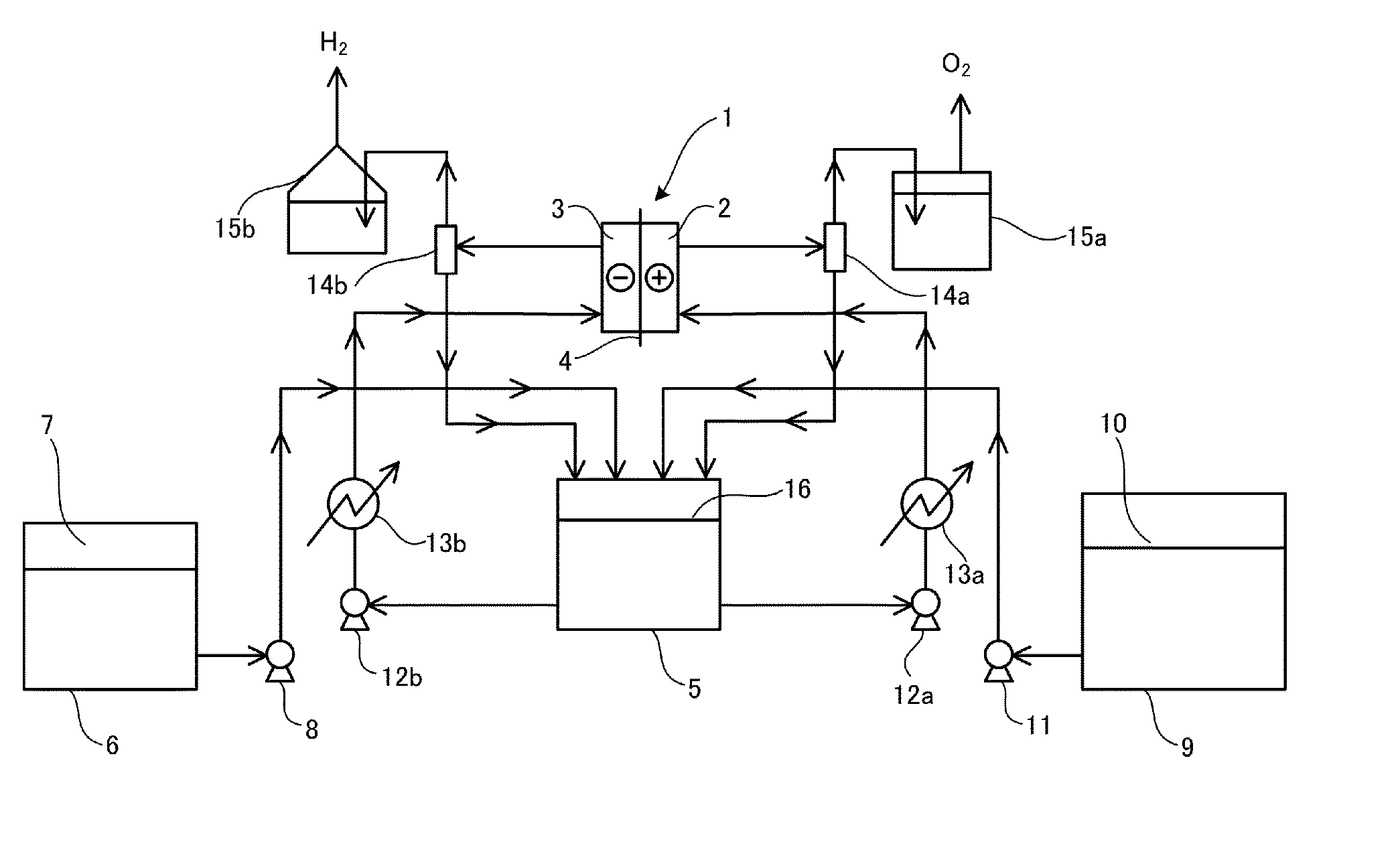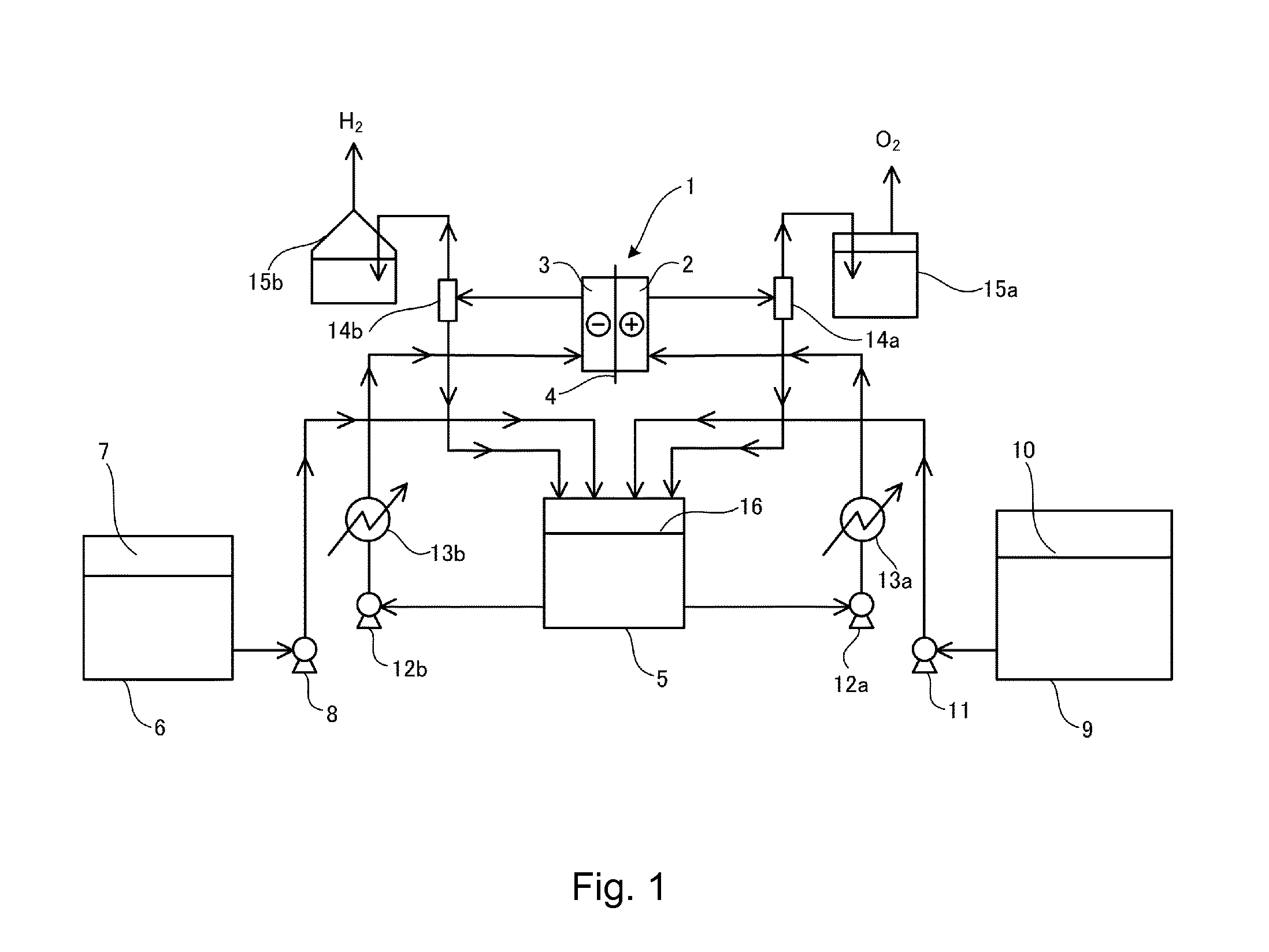Electrolytic enrichment method for heavy water
a technology of heavy water and enrichment method, which is applied in the direction of oxygen/ozone/oxide/hydroxide, nuclear engineering, separation processes, etc., can solve the problems of general method of electrolytic enrichment with some problems, limited tritium enrichment rate to the upper limit, and danger of explosion, etc., to achieve effective enriched and fractionated, and operation management is not complicated, effective effect of enriched and fractionated
- Summary
- Abstract
- Description
- Claims
- Application Information
AI Technical Summary
Benefits of technology
Problems solved by technology
Method used
Image
Examples
example 1
[0053]A test was conducted with an electrolysis cell having an electrolysis area of 1.0 dm2. Both an anode chamber (volume 400 ml) and a cathode chamber (volume 400 ml) were composed of Ni, and the anode included an expanded mesh (thickness 0.8 mm×short width (SW) 3.7 mm×long width (LW) 8.0 mm) with an active anode coating. The cathode included a fine mesh (thickness 0.15 mm×SW 2.0 mm×LW 1.0 mm) with a noble metal-based active cathode coating.
[0054]A polypropylene-based film of 100 μm was used as a diaphragm, held between both electrodes, and assembled with a zero gap.
[0055]A test process is as illustrated in FIGURE, in which an electrolysis temperature is controlled with a heater provided at the bottom of an electrolysis cell. An electrolyte is circulated by a method in which the electrolyte is supplied with circulation pumps 12a and 12b at a flow rate of 40 to 60 ml / min to the anode chamber 2 and the cathode chamber 3 through electrolyte supply nozzles from the circulation tank 5 ...
example 2
[0065]A test was conducted by the same method as in Example 1 except that a PTFE film having a thickness of 70 to 90 μm and an average pore size of 1 μm or less was used as a diaphragm. The test results were as follows.
[0066]Test results: 1.95 V, hydrogen purity 98.9%, tritium recovery rate 0.6
[0067]All of the gas purity, tritium recovery rate, and operation voltage were good.
example 3
[0068]A test was conducted by the same method as in Example 1 except that an ion exchange membrane for brine electrolysis was used as a diaphragm. The test results were as follows.
[0069]Cation exchange membrane used: Flemion (trade name of Asahi Glass Co., Ltd.) F8020SP
[0070]Test results: 2.1 to 2.4 V, hydrogen purity 99.93%, tritium recovery rate 0.6
[0071]The highest gas purity and good tritium recovery rate were obtained, but the operation voltage was high, resulting in the tendency to increase power consumption.
PUM
| Property | Measurement | Unit |
|---|---|---|
| temperature | aaaaa | aaaaa |
| current density | aaaaa | aaaaa |
| electrolysis area | aaaaa | aaaaa |
Abstract
Description
Claims
Application Information
 Login to View More
Login to View More - R&D
- Intellectual Property
- Life Sciences
- Materials
- Tech Scout
- Unparalleled Data Quality
- Higher Quality Content
- 60% Fewer Hallucinations
Browse by: Latest US Patents, China's latest patents, Technical Efficacy Thesaurus, Application Domain, Technology Topic, Popular Technical Reports.
© 2025 PatSnap. All rights reserved.Legal|Privacy policy|Modern Slavery Act Transparency Statement|Sitemap|About US| Contact US: help@patsnap.com


